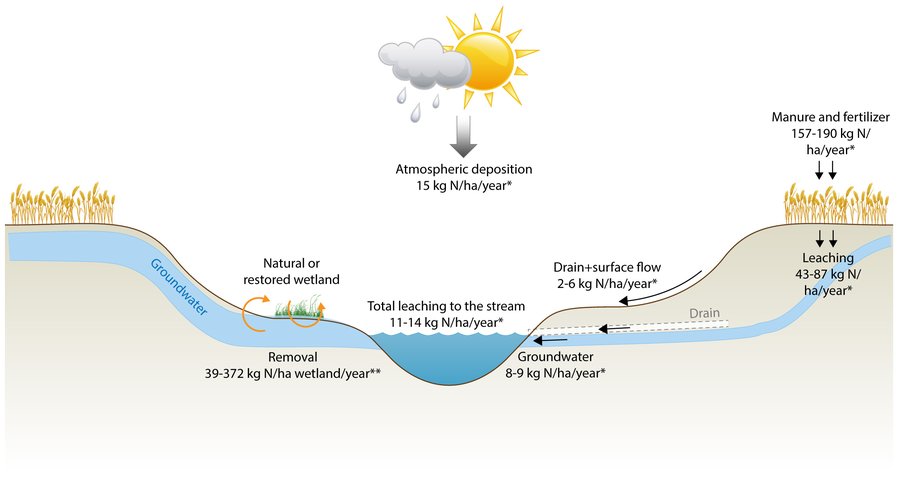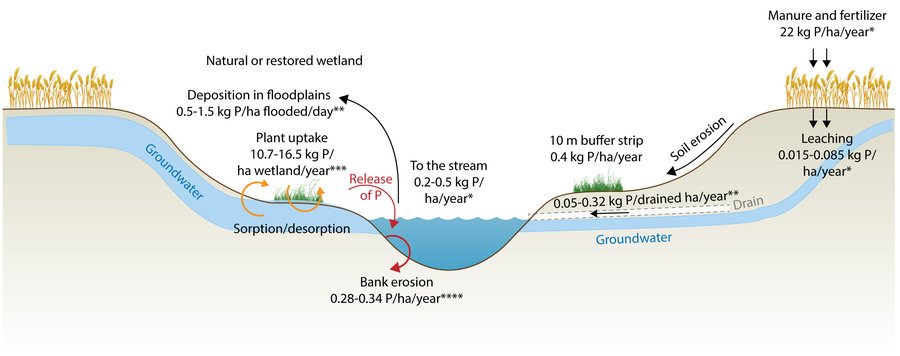Wetlands are hot-spots for nutrient transformations in the landscape. Hence, re-creation of wetlands is an efficient way to mitigate diffuse nitrogen pollution because nitrogen can be removed in wetland soils.
However, when rewetting riparian soils, there is a risk of releasing phosphorus into aquatic ecosystems. Also, alteration of the river channel may affect the erosion, transport and sedimentation of sediment. All these aspects have to be considered in wetland re-creation project to ensure the success of the mitigation measure.

*Source - see here
**Source - see here
Nitrogen is used as fertilizer in agriculture to increase production yields. However, part of the nitrogen applied into the fields can leach toward the groundwater and be transported to streams, lakes and fjords, especially if the soil is drained. As a consequence many aquatics ecosystems suffers from excess nitrogen concentration and resulting eutrophication. Natural or restored wetlands can mitigate the nitrogen pollution because wetland soils can efficiently remove nitrogen through a process called denitrification.

* Source - see here
** Source - see here
***Source - see here
**** Source - see here
Phosphorus applied to agricultural fields can be transported to streams, lakes and fjords because of erosion and transport of soil particles rich in phosphorus. Buffer zones and wetlands can retain some of these particles but when agricultural areas are converted into wetlands there is a risk of release of the phosphorus accumulated in the soil. This risk can be evaluated based on soil characteristics (see more here).
Nitrogen and phosphorus retention in restored and natural wetlands
River bank Erosion
Phosphorus sorption/ desorption processes
Buffer zones and other mitigation measures